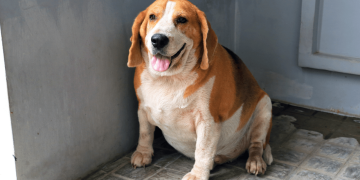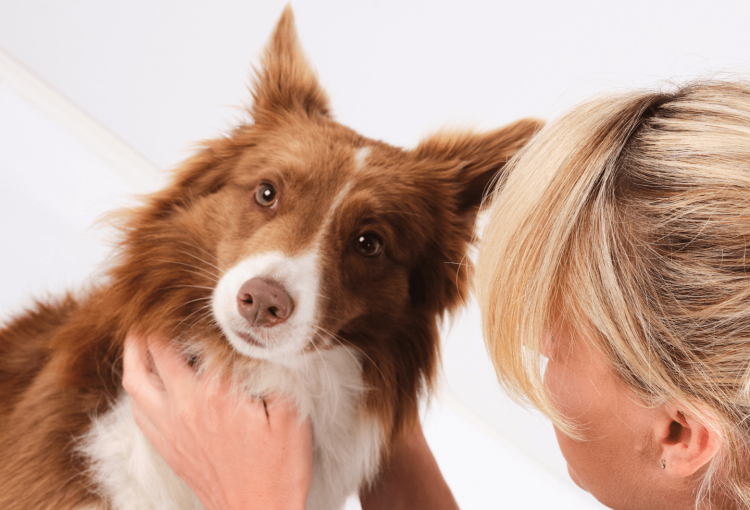Fleas and ticks are more than just a nuisance to pets—they are serious health threats. These tiny pests can cause a range of issues, from itching and skin irritation to more severe complications, such as the transmission of diseases that can endanger both pets and humans. As a pet owner, ensuring that your pet is protected from fleas and ticks is a key aspect of maintaining their health and well-being. This comprehensive guide will explain how flea and tick infestations can affect pets and provide the best ways to prevent them, including practical solutions for effective protection.
Understanding Flea and Tick Infestations
Fleas and ticks are external parasites that feed on the blood of animals, including pets like dogs and cats. These pests are not just a seasonal concern; they can thrive in various environments, from lush gardens to urban backyards, and even inside homes. Understanding the nature of these parasites and the problems they can cause is essential for effective prevention.
1. What Are Fleas and Ticks?
- Fleas: Fleas are tiny, wingless insects that can jump long distances. They are usually reddish-brown and measure about 1-2 mm in length. Fleas primarily target mammals, including pets, and feed on their blood. Fleas reproduce quickly, with a female flea laying up to 50 eggs a day, which can lead to large infestations in a short period of time.
- Ticks: Ticks are arachnids, related to spiders, and are much larger than fleas. They have a round, flat shape and can range in size from the size of a pinhead to a small marble when fully engorged with blood. Ticks attach to a host and feed on blood for several days, during which time they can transmit various diseases.
2. How Fleas and Ticks Affect Pets
Both fleas and ticks can cause a range of health problems for pets, from mild discomfort to life-threatening conditions.
- Fleas:
- Skin irritation: Flea bites cause itching, redness, and inflammation. Some pets may develop flea allergy dermatitis (FAD), a hypersensitive reaction that results in hair loss, sores, and secondary infections.
- Anemia: In severe cases, fleas can cause blood loss, leading to anemia, especially in young, elderly, or ill pets.
- Flea-borne diseases: Fleas can transmit tapeworms to pets when they ingest flea larvae while grooming. They are also vectors for diseases such as cat scratch fever, which can be passed to humans.
- Ticks:
- Disease transmission: Ticks are notorious for transmitting a variety of diseases, including Lyme disease, Rocky Mountain spotted fever, and Ehrlichiosis. These diseases can have serious effects on pets, such as joint pain, fever, and, in severe cases, organ failure.
- Tick paralysis: Certain species of ticks can cause paralysis in pets by releasing toxins into their bloodstream. This condition can progress rapidly, potentially affecting the pet’s ability to move or breathe.
- Skin infections: The bite site can become infected, causing localized swelling, redness, and pain. In some cases, the tick itself may remain embedded in the skin, leading to further complications.
The Importance of Flea and Tick Prevention
Flea and tick prevention is crucial for maintaining the health of your pet and preventing the spread of diseases. While these pests may seem like a minor annoyance, they can cause significant long-term health problems. Preventing flea and tick infestations not only ensures your pet’s comfort but also helps protect other animals and family members from the health risks these pests pose.
1. Preventing Flea and Tick-Borne Diseases
By keeping fleas and ticks away from your pet, you are reducing the risk of disease transmission. Lyme disease, Rocky Mountain spotted fever, and other tick-borne illnesses can have devastating effects on pets and can even be fatal if left untreated. Flea infestations can lead to secondary infections, anemia, and more severe allergic reactions, particularly in pets with compromised immune systems.
2. Maintaining Pet Comfort and Health
Flea bites cause intense itching and discomfort, and ticks can cause pain and swelling at the bite site. Pets with untreated flea infestations often scratch, bite, and lick excessively, leading to skin damage and potential infections. Furthermore, an untreated flea or tick problem can result in ongoing irritation and distress for your pet, affecting their overall well-being.
3. Preventing Home Infestations
Fleas can easily spread throughout your home, infesting carpets, furniture, and bedding. They can even live in your yard, making it harder to get rid of them once they’ve entered your home. Ticks can also latch onto furniture and clothing, bringing them into your home and exposing both pets and people to the risk of bites and disease.

Best Practices for Flea and Tick Prevention
Preventing fleas and ticks involves a combination of proactive steps, including using appropriate products, maintaining good hygiene, and making environmental changes. These measures can significantly reduce the likelihood of your pet encountering these pests and protect them from associated health risks.
1. Topical Flea and Tick Treatments
Topical treatments are one of the most effective ways to prevent flea and tick infestations. These products are applied directly to the pet’s skin, typically between the shoulder blades, where they are absorbed into the pet’s bloodstream. These treatments work by killing fleas and ticks on contact and preventing new infestations.
- How they work: Topical treatments contain active ingredients such as fipronil, imidacloprid, or selamectin, which target the nervous system of fleas and ticks, paralyzing and killing them. Some products also repel pests before they have a chance to attach.
- Frequency: Depending on the product, topical treatments are usually applied every 30 days to maintain effectiveness.
2. Oral Flea and Tick Medications
Oral flea and tick medications are another highly effective preventive measure. These medications come in chewable form and are typically given once a month. Oral treatments are absorbed into the pet’s bloodstream, killing fleas and ticks when they bite the pet.
- How they work: Oral medications like NexGard, Bravecto, and Simparica contain active ingredients such as afoxolaner or fluralaner, which disrupt the nervous system of fleas and ticks. When these pests feed on the pet’s blood, they are killed.
- Advantages: Oral medications are particularly useful for pets that dislike topical treatments or for those who spend a lot of time outdoors, where flea and tick exposure is higher.
3. Flea and Tick Collars
Flea and tick collars are a convenient option for pet owners seeking continuous protection. These collars release active ingredients that repel and kill fleas and ticks over a prolonged period. Some collars offer protection for up to 8 months, making them an excellent choice for long-term prevention.
- How they work: Collars such as Seresto contain ingredients like imidacloprid and flumethrin, which are released in small doses over time to protect your pet from fleas and ticks.
- Benefits: Collars are effective for pets that are difficult to medicate with topical or oral treatments, and they provide long-lasting protection.
4. Flea and Tick Shampoos
Flea and tick shampoos can provide immediate relief from fleas and ticks, especially for pets that are already infested. These shampoos are applied to the pet’s coat and left on for a few minutes to kill fleas and ticks. While effective for killing active pests, they do not provide long-term protection.
- How they work: Flea and tick shampoos contain ingredients like pyrethrins, which kill fleas and ticks on contact. They can be a good option for pets that need quick relief from an infestation.
- Limitations: Shampoos are generally not as effective as other treatments for preventing future infestations, so they are best used in conjunction with other preventive measures.
5. Environmental Control
Fleas and ticks can live in your home and yard, making environmental control a critical part of prevention. By treating the areas where your pet spends time, you can reduce the risk of reinfestation.
- Vacuuming and washing: Regularly vacuum your home, paying special attention to carpets, furniture, and pet bedding. Washing your pet’s bedding, toys, and other accessories in hot water can help remove fleas and eggs.
- Yard treatment: Keep your yard free from tall grass, leaf piles, and debris where ticks can hide. You can also treat your yard with outdoor flea and tick treatments to reduce the risk of exposure.
- Flea and tick sprays: Consider using flea and tick sprays on your pet’s bedding, carpets, and furniture to eliminate pests.
6. Regular Grooming and Checkups
Regular grooming and veterinary checkups are essential for preventing flea and tick infestations. Grooming allows you to inspect your pet for signs of fleas or ticks, and it also helps you maintain a clean and healthy coat.
- Brushing: Regularly brushing your pet’s fur can help you spot any fleas or ticks that may have attached to their skin. Pay close attention to areas like the ears, neck, and between the toes.
- Veterinary checkups: Regular checkups with your veterinarian ensure that your pet is healthy and up-to-date on flea and tick prevention. Your vet can recommend the best preventive products based on your pet’s specific needs.
Conclusion
Flea and tick prevention is an essential part of keeping your pet healthy and comfortable. These pests can cause a wide range of health problems, from skin irritation to the transmission of serious diseases. By using a combination of preventive measures, such as topical treatments, oral medications, collars, and environmental control, you can protect your pet from fleas and ticks year-round. Regular grooming and veterinary checkups are also crucial to ensure that your pet remains free from these harmful parasites. With the right precautions in place, you can ensure that your pet enjoys a happy, healthy life, free from the discomfort and risks associated with fleas and ticks.























































